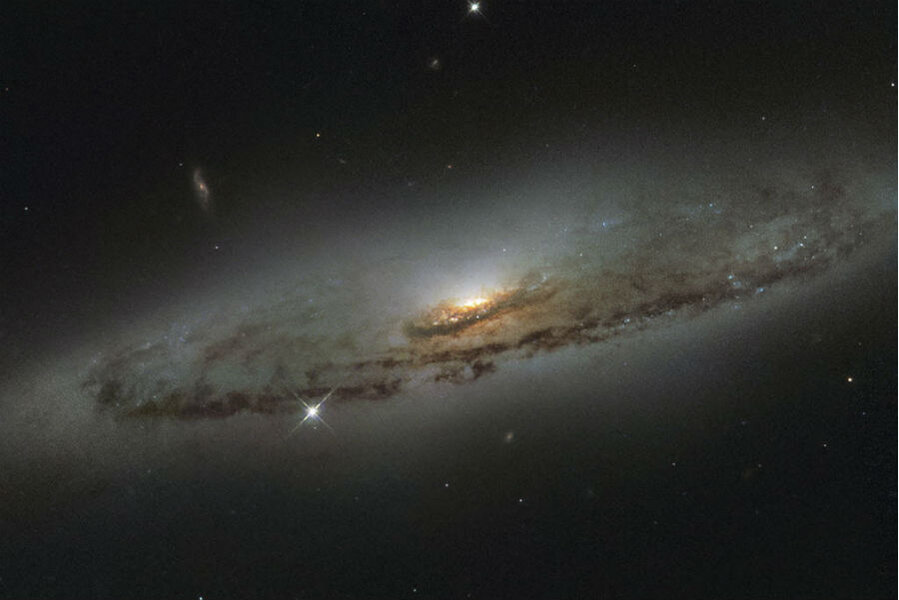What's with those giant green space blobs? Telescopes give a hint.
Loading...
When the first Lyman-alpha blob was discovered in 2000, scientists didn't quite know what to make of it.
The phenomenon appears to observers on Earth as a faint green blob in the sky. The structures are clearly massive and glow an intriguing green color, but exactly why they glowed green remained unknown.
But now, a group of researchers say they are beginning to unravel the Lyman-alpha blob mystery and are set to publish their findings in the upcoming issue of The Astrophysical Journal.
Lyman-alpha blobs are some of the largest objects ever observed in the known universe. The structure being studied by the research team is known as SSA22-Lyman-alpha Blob 1 (LAB-1), the largest and first blob ever discovered. LAB-1 is about 300,000 light-years across, or about three times the size of our own Milky Way galaxy, according to Space.com.
Located about 11.5 billion light years from Earth, LAB-1 is immensely old. The light observed by the researchers from the phenomenon is ancient, only 2.3 billion years younger than the universe itself.
Astronomers observed LAB-1 using the Atacama Large Millimeter/submillimeter Array (ALMA) and the Very Large Telescope in Chile. The researchers discovered two galaxies at the heart of the green cloud undergoing frenzied star production, causing the surrounding hydrogen gas cloud to glow brightly. Stars in the two galaxies were being created at a rate about 100 times faster than their creation of stars in our own galaxy.
The research team then input the data they had collected into NASA's Pleiades supercomputer, running a highly sophisticated galaxy formation model to show that the ultraviolet light from the galactic star formation scattering in the hydrogen would produce the Lyman-alpha blob phenomenon as observed from Earth.
"Think of a streetlight on a foggy night – you see the diffuse glow because light is scattering off the tiny water droplets," Jim Geach, lead author of the study, explained in a press release. "A similar thing is happening here, except the streetlight is an intensely star-forming galaxy and the fog is a huge cloud of intergalactic gas. The galaxies are illuminating their surroundings."
That explains the glow of the blobs, why are they green? Ultraviolet light is not visible to humans.
The study explains that the green color arises from the scattered UV light's wavelength stretching via the Doppler effect, which explains changes in observed wavelengths of light depending on whether an object is moving towards or away from the observer.
As the universe expands, the objects moving farther away from the point of observation, such as LAB-1, undergo what is known as redshift. The wavelength of the radiation emitted by an object undergoing redshift stretches out as it moves farther away from the observer. To the observer, the radiation for such an object appears to come from a lower-energy, redder part of the spectrum compared to the higher energy state of the radiation actually being emitted by the object. As the universe expands, objects as far away as LAB-1 are increasingly effected by redshift to the point where UV radiation has had its wavelength stretched so much that the light now falls into the visible spectrum.
And that visible light, in this case of LAB-1, is green.
"What’s exciting about these blobs is that we are getting a rare glimpse of what’s happening around these young, growing galaxies," says Dr. Geach in the press release. "For a long time the origin of the extended Lyman-alpha light has been controversial. But with the combination of new observations and cutting-edge simulations, we think we have solved a 15-year-old mystery: Lyman-alpha Blob-1 is the site of formation of a massive elliptical galaxy that will one day be the heart of a giant cluster."
"We are seeing a snapshot of the assembly of that galaxy 11.5 billion years ago."






